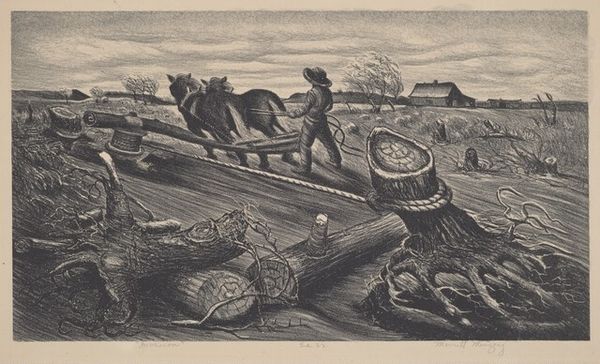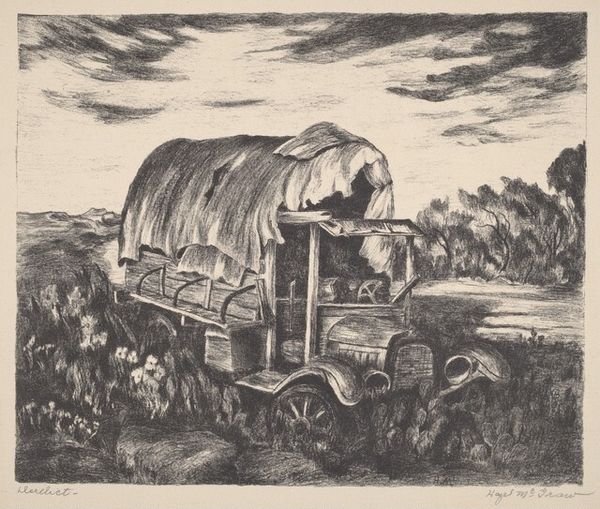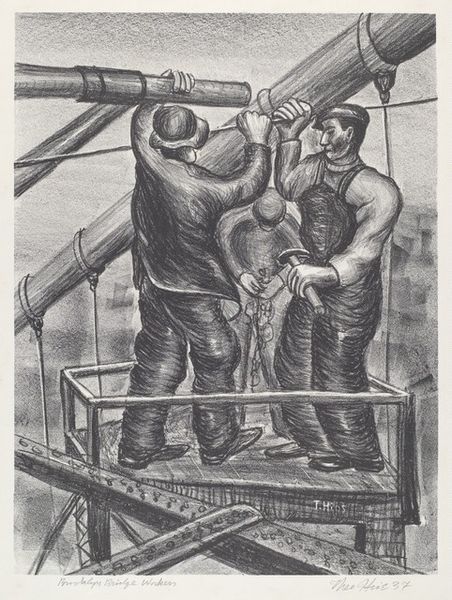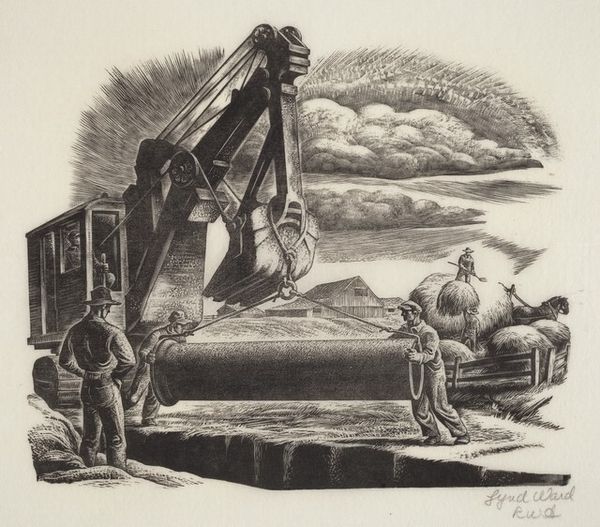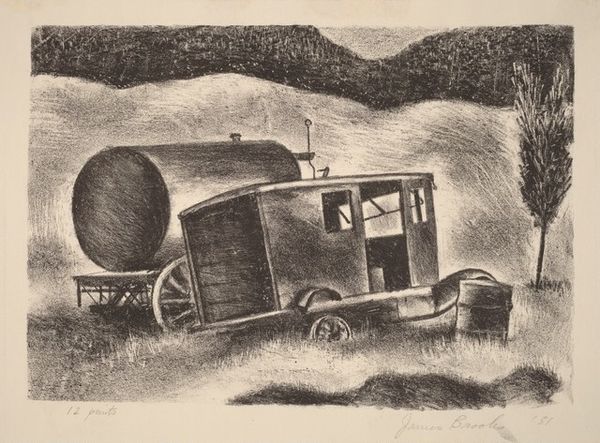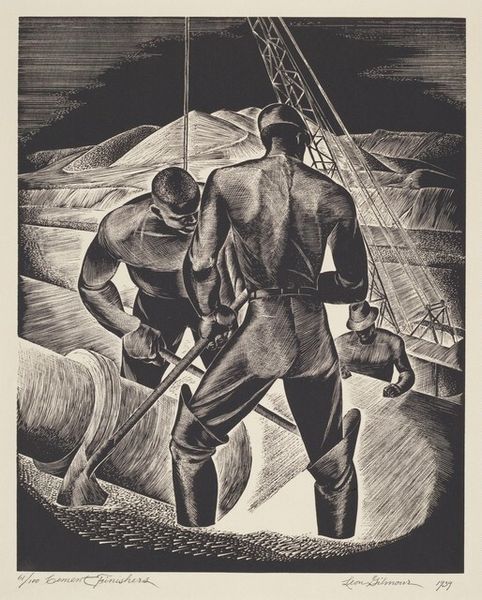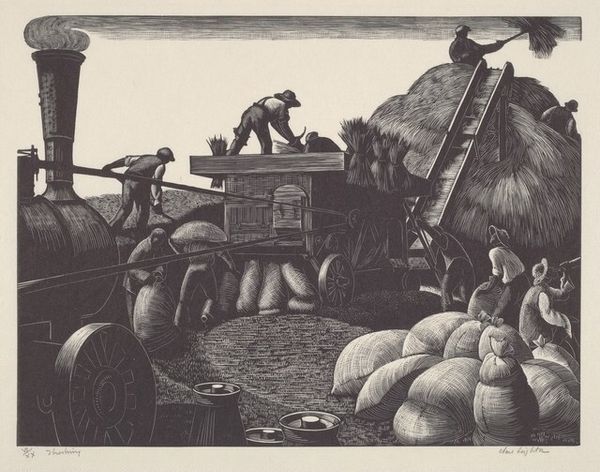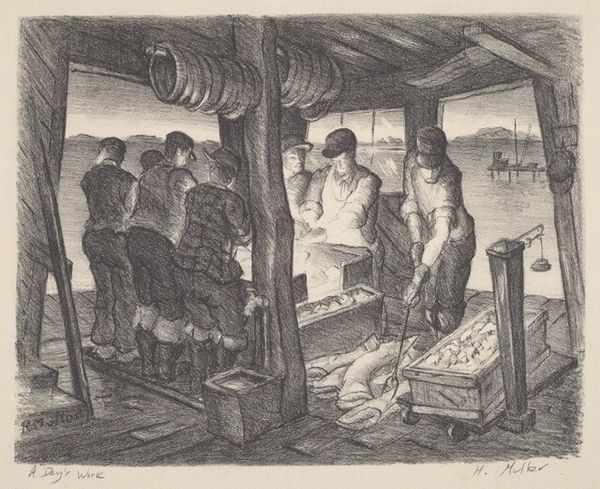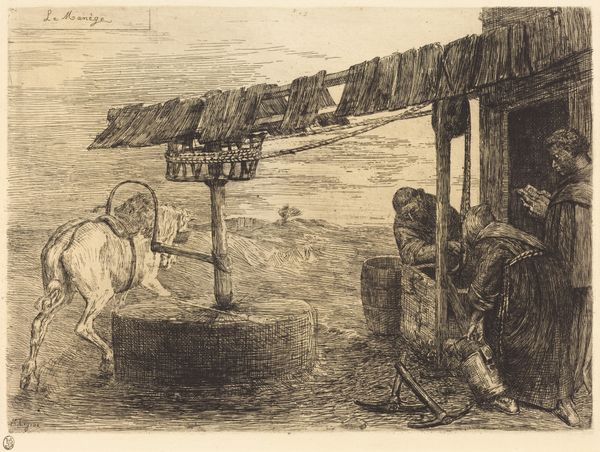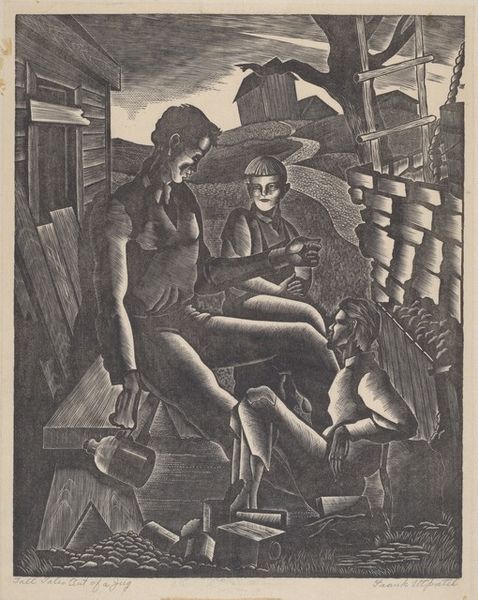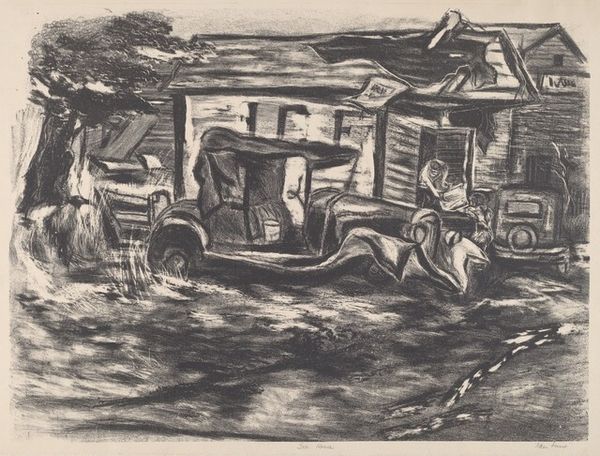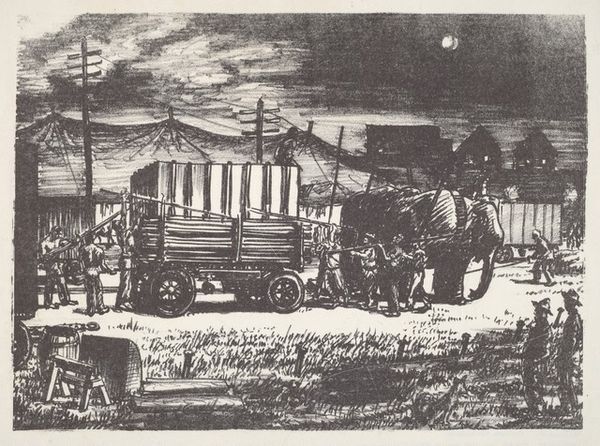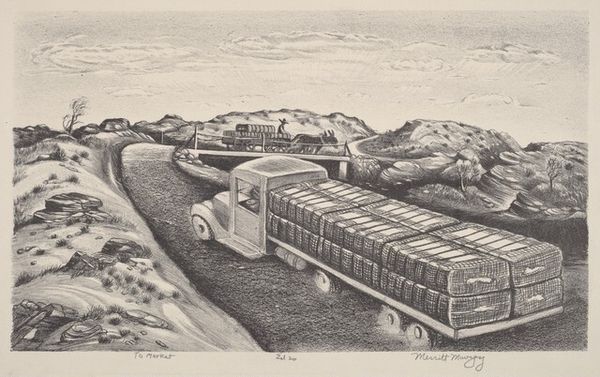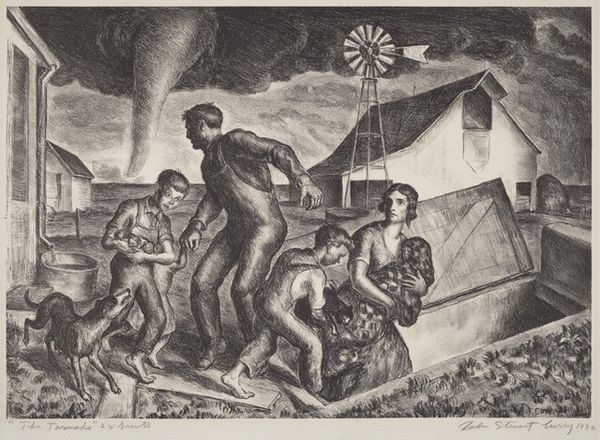
drawing, print, graphite
#
drawing
#
ink drawing
# print
#
landscape
#
graphite
#
cityscape
#
genre-painting
#
realism
Dimensions: image: 276 x 414 mm sheet: 279 x 431 mm
Copyright: National Gallery of Art: CC0 1.0
Editor: This is Daniel Ralph Celentano’s “Packing the Produce,” created in 1946. It seems to be a print made from graphite and ink drawings. It shows men loading crates onto a truck. I'm struck by the high contrast, which makes the figures appear almost sculptural, but there's also a kind of starkness in the scene. What catches your eye when you look at it? Curator: My attention is immediately drawn to the interplay between the geometric forms—the crates, the truck, the rigid bodies of the figures—and the more organic shapes of the landscape. Notice how Celentano employs a sophisticated use of line to delineate form and texture. The density of the graphite creates depth, setting up spatial relationships. The forms build to one another from bottom left to the top right. Editor: I see what you mean. The sharp angles of the crates repeat in the architecture of the truck cab, versus the loose rendering of the background. Is he playing with realism versus abstraction, perhaps? Curator: Precisely. Consider, too, the function of light and shadow. Celentano manipulates the tonal values to create a dramatic effect, emphasizing the weight and solidity of the objects. The almost harsh contrast does more than depict light; it structures the visual experience, directing our gaze. It isn't just what is depicted; it's how the marks function on the surface of the picture plane. What impact does this tension have for you? Editor: That's really helpful. Now I'm seeing how much thought was put into the arrangement and the surface, more than the actual activity being shown. Curator: Exactly. We can thus move beyond representational concerns and towards an appreciation of its formal language. Editor: So, by analyzing the contrast, lines, and shapes, we get a richer understanding of Celentano's intent and achievement here, and shift our focus toward appreciating formal relations on the picture plane? Curator: Precisely. This piece is less about the figures and objects themselves, and more about the arrangement and relationships that those figures enact on the plane.
Comments
No comments
Be the first to comment and join the conversation on the ultimate creative platform.
